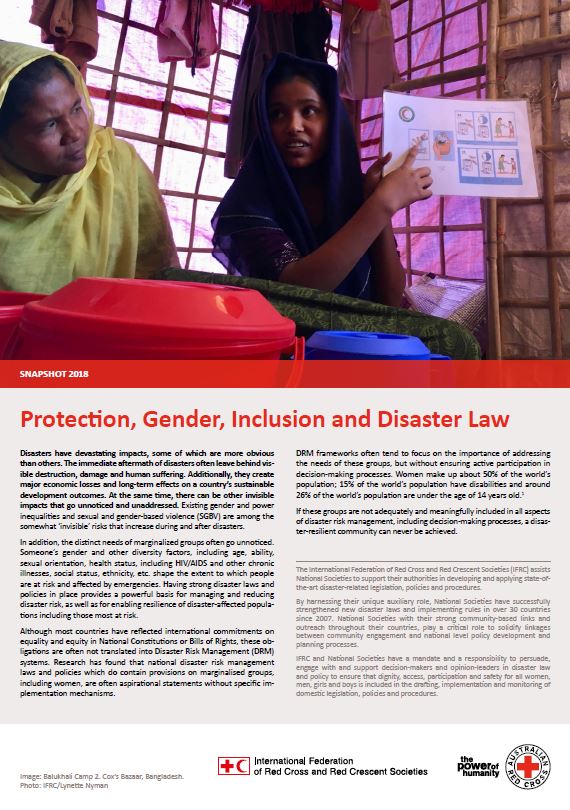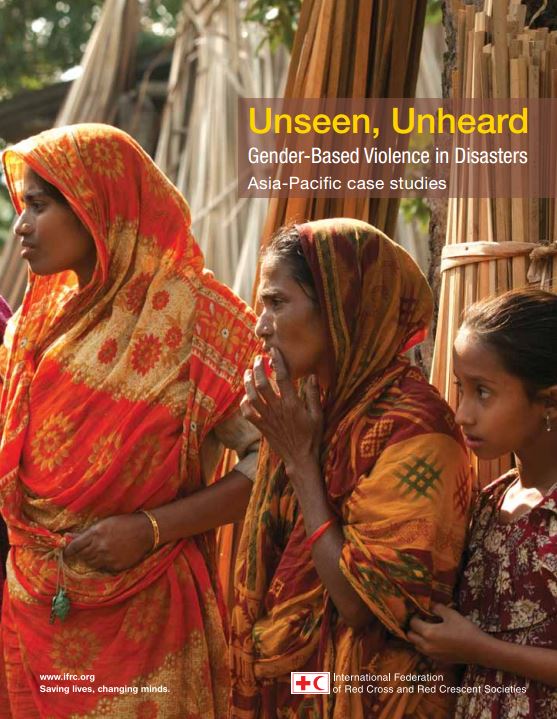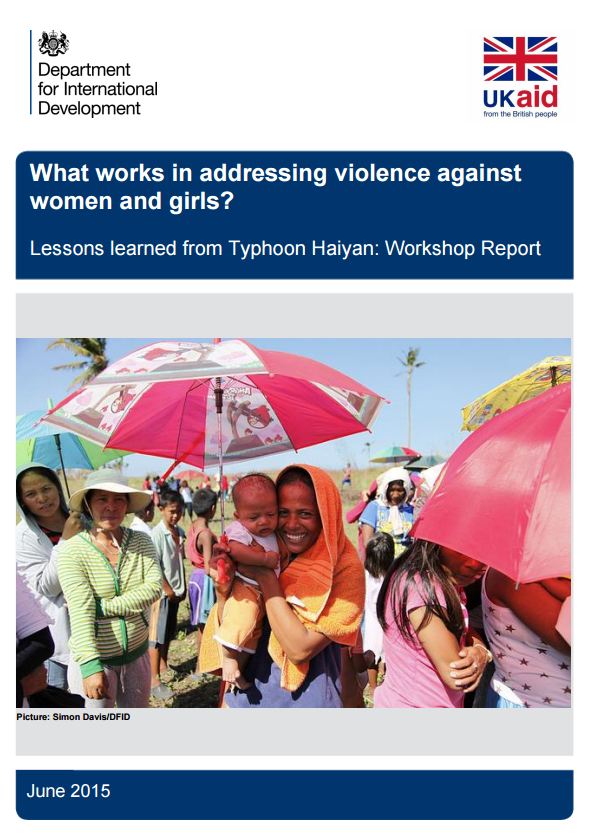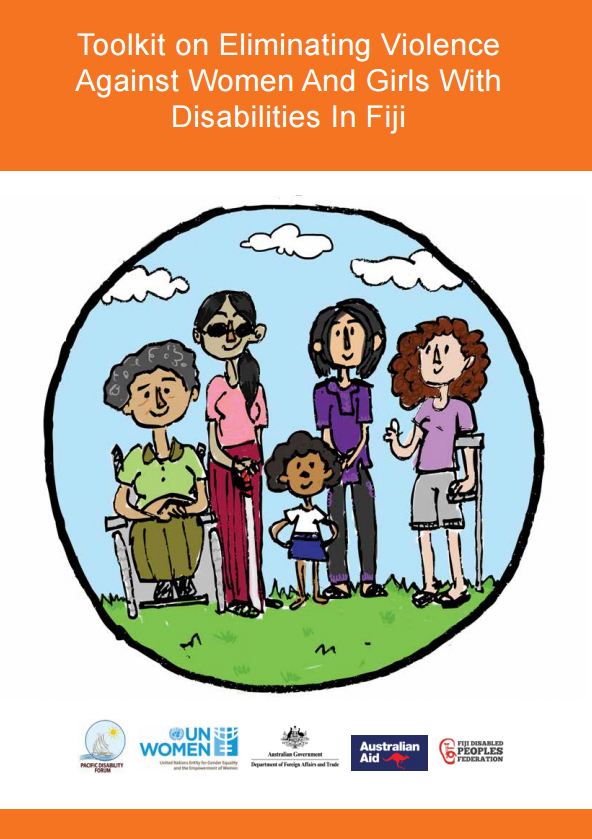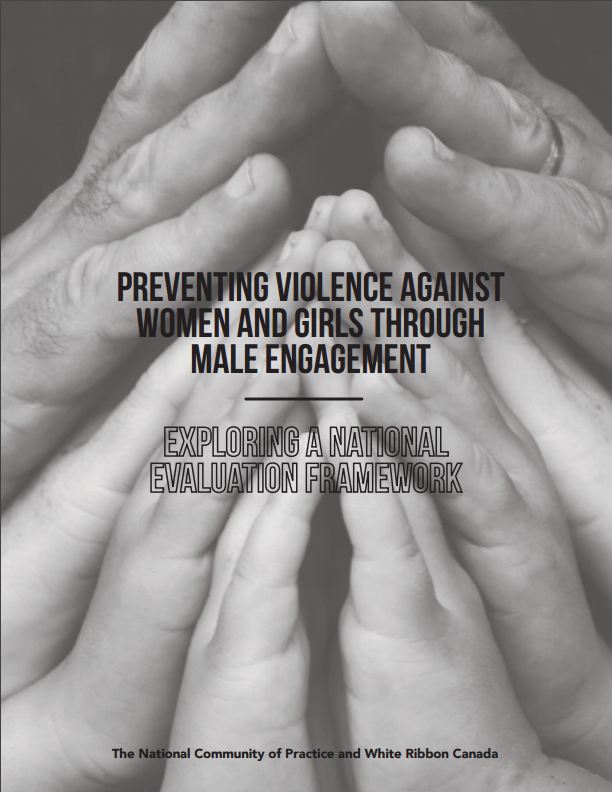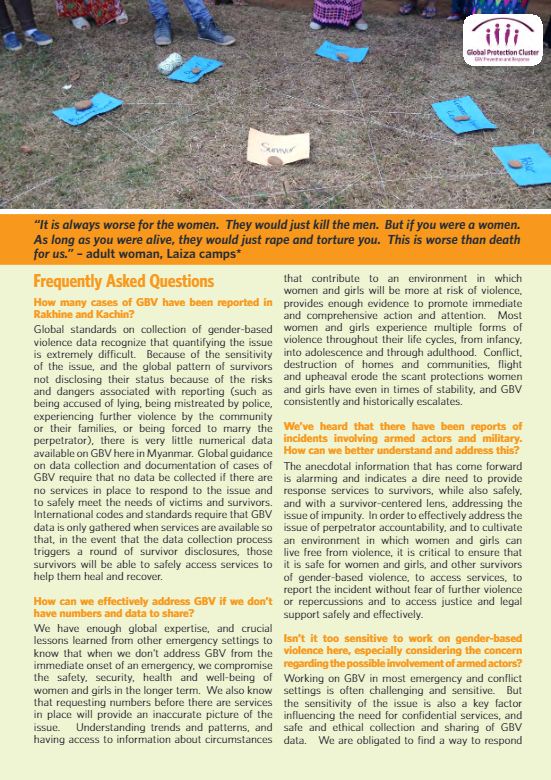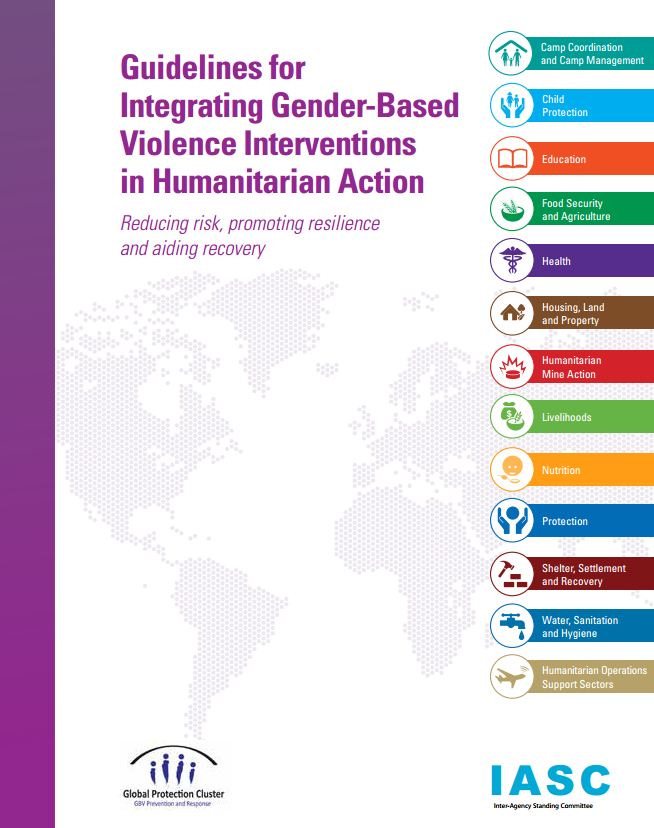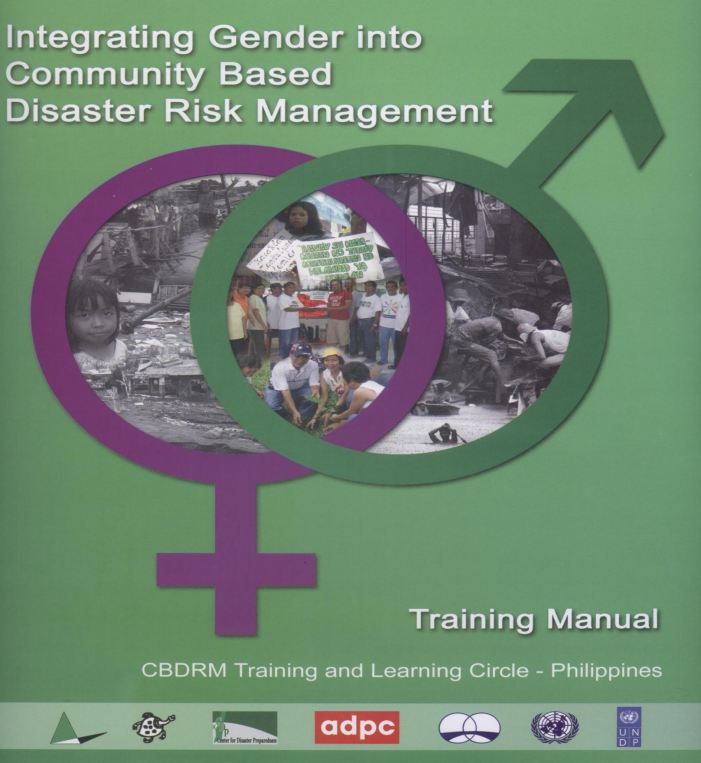Protection, Gender, Inclusion and Disaster Law Snapshot 2018
Disasters have devastating impacts, some of which are more obvious than others. The immediate aftermath of disasters often leave behind visible destruction, damage and human suffering. Additionally, they create major economic losses and long-term effects on a country’s sustainable development outcomes. At the same time, there can be other invisible impacts that go unnoticed and unaddressed. Existing gender and power inequalities and sexual and gender-based violence (SGBV) are among the somewhat ‘invisible’ risks that increase during and after disasters.
Recognizing that disasters are not gender-neutral, and disproportionately affect marginalised groups, IFRC offers recommendations on how to support gender equality, protection, and inclusion in disaster-related legislation, policies, and procedures. Click here to read the full “Protection, Gender, Inclusion and Disaster Law Snapshot 2018.”
![]()
16 Days of Activism Against Gender-Based Violence | 25 November – 9 December 2017 | Cambodia
Several reports show that Cambodian has seen a gradual decrease of domestic violence against women and girls since 2000. However, according to Cambodia Gender Assessment in 2014, there are still number of challenges facing the country in its effort to end gender-based violence (GDV), including but not limited to:
- Growing number of reports on rape and sexual violence in the family;
- Sexual harassment at workplaces and in communities;
- Limited access to social and legal support services to survivors.
Between 25 November to 9 December 2017, CRC conducted activities under the campaign “16 Days of Activism Against Gender-Based Violence” on the topic “Leave No One Behind – End Violence Against Women and Girls.” The expected results and measurements for success include:
- At least 30 Red Cross Youths attending the half-day workshop on GBV.
- At least 750 youth from four universities attending GBV awareness
- At least 200 youth, Red Cross staff, and volunteers attending the 16 Days Campaign for the elimination of violence against women at the Cambodian Red Cross National Head Quarter
- Number or people around country to receive GBV information through this media National TV, Newspapers
Number of activities were conducted at four universities, with 872 students participated, from 25 November to 7 December. The activities included a mix of brainstorming, plenary discussion, presentation, and Q&A facilitated by the resource persons from the Ministry of Women Affairs.
On 9 December, CRC conducted a special event at the CRC National Head Quarter with 200 participants including representatives from the Ministry of Women Affairs, CRC leaders, staff, Red Cross youth and Red Cross youth advisors, deans and directors of universities, students, Red Cross partners, and other stakeholders).
Total number of participants attending in the 16 Days Activism was 1,072 participants, of which about 40% are female.
Supporting Documents:
![]()
Unseen, Unheard: Gender-Based Violence in Disasters. Asia Pacific case studies
Purpose
This report follows on from the global study Unseen Unheard: gender based violence in disasters which saw research being conducted in 9 countries globally, and included Bangladesh, Myanmar and Samoa from the Asia Pacific region. The Asia Pacific case studies provide an overview of gender-based violence (GBV) within each country context, as well as presenting findings and key recommendations with regards to 1) Awareness and understanding on GBV occurrence during disasters; 2) Availability and access to services; 3) Safety and security and; 4) Livelihoods and migration.
Overview
This report features three case studies from that study, each from Asia-Pacific:
- The first is from Bangladesh, a country with a legacy of cyclical disasters, including cyclones, floods and landslides. The study finds that some of the primary needs among those affected by cyclones include safe shelter settings for women and girls and, in particular, pregnant women, in order to prevent and reduce the risks of GBV.
- The second case study is from Samoa. In the aftermath of the 2009 Tsunami and 2012 Cyclone Evan, survivors reported GBV in shelters created for people displaced by the disasters. They also told us of an increase in domestic violence following the disasters.
- The third case study is from Myanmar, and looks at GBV occurrence and response after Cyclone Nargis in 2008. The results of this case study are interesting: half of respondents cited an increase in GBV after the cyclone, while others claimed that it did not arise at all because of strong family and community-based support systems. Such a puzzle may point to the culture of silence that surrounds GBV.
Usage: Policy reference and learning from experience
Audience: National Society staff, particularly gender and diversity practitioners.
See also: Resolution on “Sexual and gender-based violence: Joint action on prevention and response” which was adopted in December 2015 by the International Conference of the Red Cross and Red Crescent .This resolution was a direct outcome of the studies we undertook in Bangladesh, Samoa, Myanmar and elsewhere.
![]()
What Works in Addressing Violence against Women and Girls: Lessons Learned from Typhoon Haiyan
Purpose
This document summarises the recommendations and discussions from a workshop hosted by the Department for International Development (DFID) on 9 June 2014. The purpose of the workshop was to build consensus on what did and didn’t work to help prevent and respond to violence against women and girls in the Philippines after Typhoon Haiyan hit in November 2013.
Overview
Recommendations from the workshop are:
The Gender Based Violence (GBV) sub-cluster should engage with the UN Office for the Co-ordination of Humanitarian Affairs (OCHA) to regain ground on including protection/GBV questions in early assessments for future responses
The GBV sub-cluster should prioritise sustained field presence for its surge staff, rather than the meeting of bureaucratic benchmarks at national level; in this case the deadlines for the new ‘Level 3’ commitments absorbed a lot of surge resources.
At the same time, the sub-cluster and the protection/GBV community should shift efforts towards practical support to mainstreaming. Surge staff at the field level could give direct mainstreaming support to sectoral clusters, and the use of revised tools that are shorter and more pragmatic (such as checklist-style) should support this.
International implementing organisations, particularly international NGOs, should take on more of a role to connect local civil society organisations with the international community’s coordination structures and international protection/GBV actors. This could be as simple as accompanying local partners to cluster meetings, or as involved as providing consistent training on coordination structures.
Disaster preparedness in the high-risk Philippines is vital, and greater attention to protection, as part of preparedness investments, should be paid by organisations with a long-term presence in the country (which covers many UN agencies, Red Cross/Red Crescent, and international NGOs). Where the government is delivering this already, agencies and donors should give funding support.
Usage: Learning from experience
Audiences: Technical staff, Gender and diversity practitioners, Disaster preparedness
Reference: DFID (June 2015). What Works in Addressing Violence against Women and Girls: Lessons Learned from Typhoon Haiyan. Workshop Report(pp. 1-14). Available from: https://www.gov.uk/government/publications/what-works-in-addressing-violence-against-women-and-girls[Accessed: 26 December 2015].
![]()
Toolkit on Eliminating Violence against Women and Girls with Disabilities In Fiji
Purpose
This toolkit seeks to: raise awareness on violence against women using a human rights-based approach, increase understanding of the barriers faced by women and girls with disabilities that experience violence, and show people how they can assist in the elimination of violence against women.
This toolkit contains five modules with facilitator notes, additional information and worksheets to run the sessions. It also contains checklists that can be used in programme assessment and planning for disability inclusion. The modules cover: human rights; disability; gender; violence against women and girls with disabilities; and action planning for inclusion.
Overview
- Types of violence include: physical violence; sexual violence; social- economic violence; and emotional violence. The consequences of violence are long-lasting, reach into all aspects of women’s lives, and can include permanent disability or death through homicide, suicide or through reduced life expectancy due to illness. While emotional violence is often considered ‘not serious’ or ‘normal’, the consequences are serious and long-lasting.
- Domestic violence occurs because men feel entitlement over women and because the community does not value women and men equally. This difference in status is the root cause of domestic violence.
- Appendix 1 contains a disability inclusive practice checklist.
Usage: Training
Audiences: Technical staff, Gender and diversity practitioners
Reference: Pacific Disability Forum (PDF) (2014). Toolkit on Eliminating Violence against Women and Girls with Disabilities In Fiji (pp. 1-170). Available from: http://www.pacificdisability.org/getattachment/Resources/PDF-Resources/Toolkit-on-Eliminating-Violence-Against-Women-And-Girls-With-Disabilities-In-Fiji-(1).pdf.aspx [Accessed 8 January 2016].
![]()
Preventing Violence against Women and Girls through Male Engagement: Exploring a National Evaluation Framework
Purpose
In October 2013, White Ribbon began coordinating a National Community of Practice composed of organisations with projects funded by Status of Women Canada’s ‘Working Together: Engaging Communities To End Violence Against Women And Girls’. The Community of Practice focused on sharing lessons learned, challenges and enabling factors in engaging men and boys to help prevent gender-based violence.
One of the three main activities was the development of a National Evaluation Framework (NEF) to identify shared results across programmes and provide an evaluation resource tool for others in the gender-based violence prevention sector.
Overview
The process of change involved in engaging men and boys in GBV prevention includes three main elements: the context, the outcomes as they relate to the dimensions of change and the longer-term objective of sustainability (p. 10).
NEF measures change at four levels: the community, organisational, social and individual level.
In order to create sustainable change, capacity needs to be built at four levels: with individual men and boys; within male networks and relationships; the organisations that are committed to doing this work; and the community’s capacity to respond to and support GBV prevention initiatives.
Expected outcomes from the NEF include: awareness-raising; knowledge and understanding; attitudinal change; skill development; behavioural change; gender equitable peer interaction and support; partnerships and coalition building; advocacy for gender-based violence prevention.
Usage: Policy guidance
Audiences: Technical staff, Gender and diversity practitioners
Reference: National Community of Practice & White Ribbon Canada (2015). Preventing Violence against Women and Girls through Male Engagement: Exploring a National Evaluation Framework (pp. 1-20). Available at: http://whiteribbon.ca/pdfs/NEF_CoP.pdf [Accessed 8 January]
![]()
Myanmar Gender-based Violence (GBV). Frequently Asked Questions
Purpose
This document outlines the current situation regarding gender-based violence in Myanmar in the form of ‘frequently asked questions’.
Overview
How many cases of GBV have been reported in Rakhine and Kachin?
Because of the sensitivity of the issue, and the global pattern of survivors not disclosing their status because of the risks and dangers associated with reporting, there is very little numerical data available on GBV here in Myanmar. Global guidance on data collection and documentation of cases of GBV require that no data be collected if there are no services in place to respond to the issue and to safely meet the needs of victims and survivors.
How can GBV be effectively addressed if there are no numbers and data to share?
We have enough global expertise, and crucial lessons learned from other emergency settings, to know that if GBV is not addressed immediately, at onset of an emergency, the safety, security, health and well-being of women and girls is compromised in the longer term. It is also known that requesting numbers before there are services in place will provide an inaccurate picture of the issue.
We’ve heard that there have been reports of incidents involving armed actors and the military. How can we better understand and address this?
In order to effectively address the issue of perpetrator accountability, and to cultivate an environment in which women and girls can live free from violence, it is critical to ensure that it is safe for women and girls, and other survivors of gender-based violence, to access services, to report the incident without fear of further violence or repercussions and to access justice and legal support safely and effectively.
Usage: Policy development
Audiences: National Society leadership, Technical staff
Reference: Global Protection Cluster (2014). Myanmar Gender-based Violence (GBV). Frequently Asked Questions (pp. 1-2).
![]()
Guidelines for Integrating Gender-Based Violence Interventions in Humanitarian Action: Reducing risk, promoting resilience and aiding recovery
Purpose
This document provides practical guidance and effective tools for humanitarians and communities to coordinate, plan, implement, monitor and evaluate actions for the prevention and mitigation of gender-based violence throughout all stages of humanitarian response, from preparedness to recovery.
It provides guidelines across 13 thematic areas: camp coordination and camp management; child protection; education; food security and agriculture; health; housing, land and property; humanitarian mine action; livelihoods; nutrition; protection; shelter, settlement and recovery (SS&R); water, sanitation and hygiene (WASH); and humanitarian operations support sectors, focusing on logistics and telecommunications.
Overview
Each thematic area section includes a fold-out summary table for use as a quick reference tool. The table links key recommendations made in the body of each thematic area with guidance on when the recommendations should be applied across four stages of emergency: Pre-emergency/preparedness (before the emergency and during preparedness planning), Emergency (when the emergency strikes), Stabilised Stage (when immediate emergency needs have been addressed), and Recovery to Development (when the focus is on facilitating returns of displaced populations, rebuilding systems and structures, and transitioning to development).
The thematic areas are organised according to five elements of a programme cycle: assessment analysis and planning, resource mobilisation, implementation, coordination and monitoring and evaluation. Each element of the programme cycle is designed to link with and support the other elements. Coordination is presented as a distinct element, but should be considered and integrated throughout the entirety of the programme cycle.
Guiding principles and approaches for addressing gender based violence can be found on pp. 45-48. These include the human rights-based approach, survivor-centred approach, community-based approach and systems approach.
Usage: Guidance for project implementation, Training
Audiences: National society leadership, Technical staff, Gender and diversity practitioners
Reference: Inter-Agency Standing Committee (IASC). Guidelines for Integrating Gender-Based Violence Interventions in Humanitarian Action: Reducing risk, promoting resilience and aiding recovery (pp. 1-366). Available from: http://gbvguidelines.org/ [Accessed 23 December 2015].
![]()
Integrating Gender into Community-Based Disaster Risk Management. Training Manual
Purpose
This training manual seeks to fill gaps in practical guidance in gender mainstreaming in disaster risk management at local and community level. It aims to strengthen participants’ knowledge and skills in integrating gender in the concepts and practices of Community-Based Disaster Risk Management (CBDRM).
In general, the training aims to integrate gender perspective in disaster risk management to ensure that both women and men have the necessary capacities in addressing their respective vulnerabilities to enable them to protect themselves, their families and their immediate communities.
Overview
The training curriculum is divided into five modules. For each module it details the purpose of the learning objectives, key points, methodology, process and materials needed for the training. It also gives an estimated duration for the module.
- Understanding Disasters and Community-Based Disaster Risk Management: This module looks at local disaster experiences, basic concepts, disaster and community-based disaster risk management. Pages 40-43 look at gender and gender-sensitive disaster risk management.
- Gender Perspective in CBDRM: This module looks at the need for gender-sensitive CBDRM and how to integrate the gender perspective in CBDRM.
- Gender-Sensitive Risk Assessment: This module looks at hazard assessment, participatory vulnerability and capacity assessment and gender-sensitive community risk assessment hands-on. Pages 85-87 look at how gender relations shape the four factors of vulnerability: economic, social, physical and environmental. A checklist for gender-sensitive risk assessment can be found on pp. 104-105.
- Gender-Sensitive Disaster Risk Management: This module looks at gender-sensitive disaster risk reduction and emergency response and recovery.
- Gender-Sensitive Disaster Risk Management Planning: This module looks at gender-sensitive CBDRM planning (action planning). A framework for using gender equality and women’s empowerment can be found on p. 153.
Usage: Training
Audiences: Gender and diversity practitioners, Technical staff
Reference: Community-Based Disaster Risk Management (2010). Integrating Gender into Community-Based Disaster Risk Management. Training Manual (pp. 1-174). Available from: http://www.preventionweb.net/files/14452_genderincbdrm1.pdf [Accessed: 22 December 2015].
![]()


